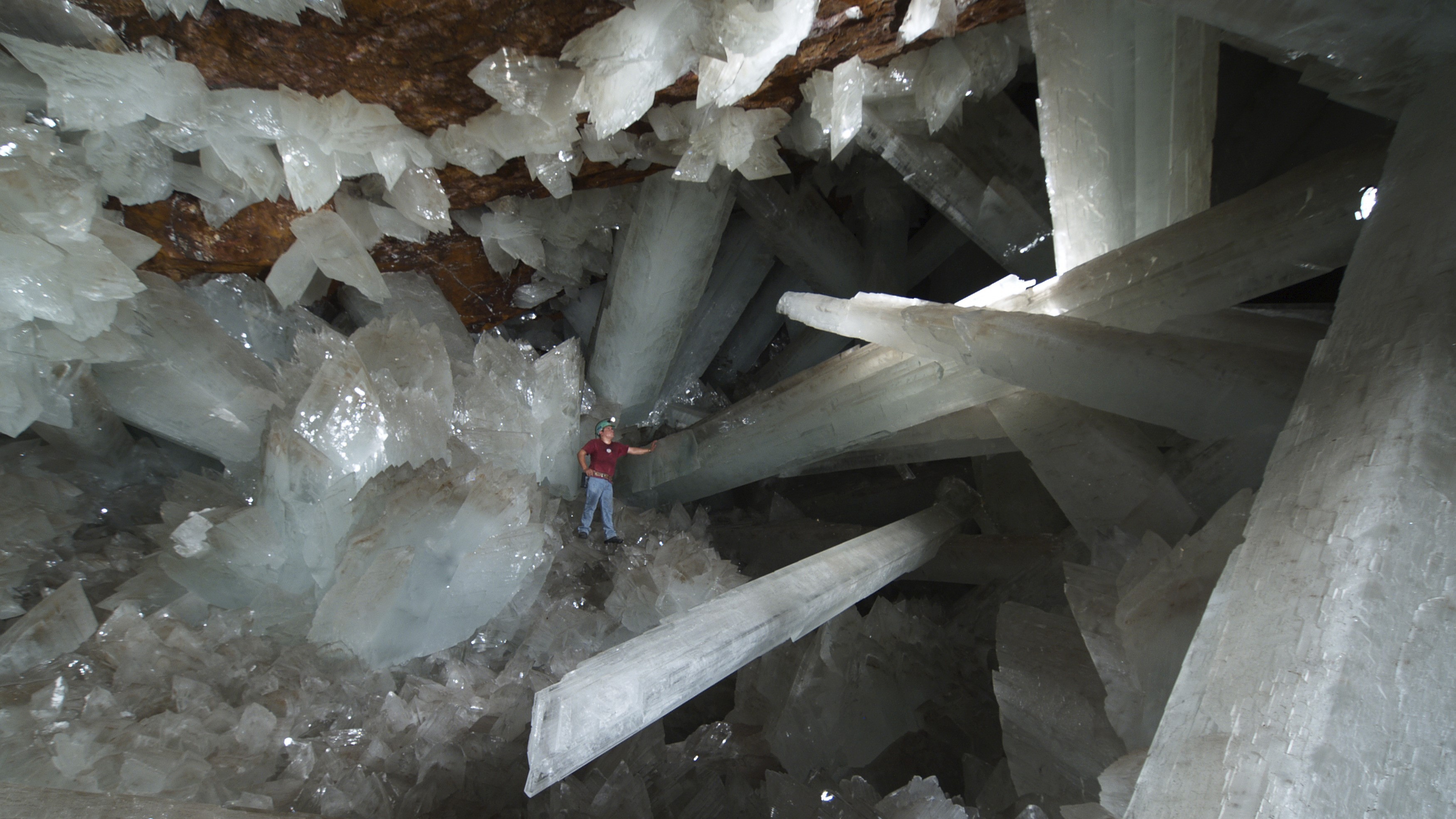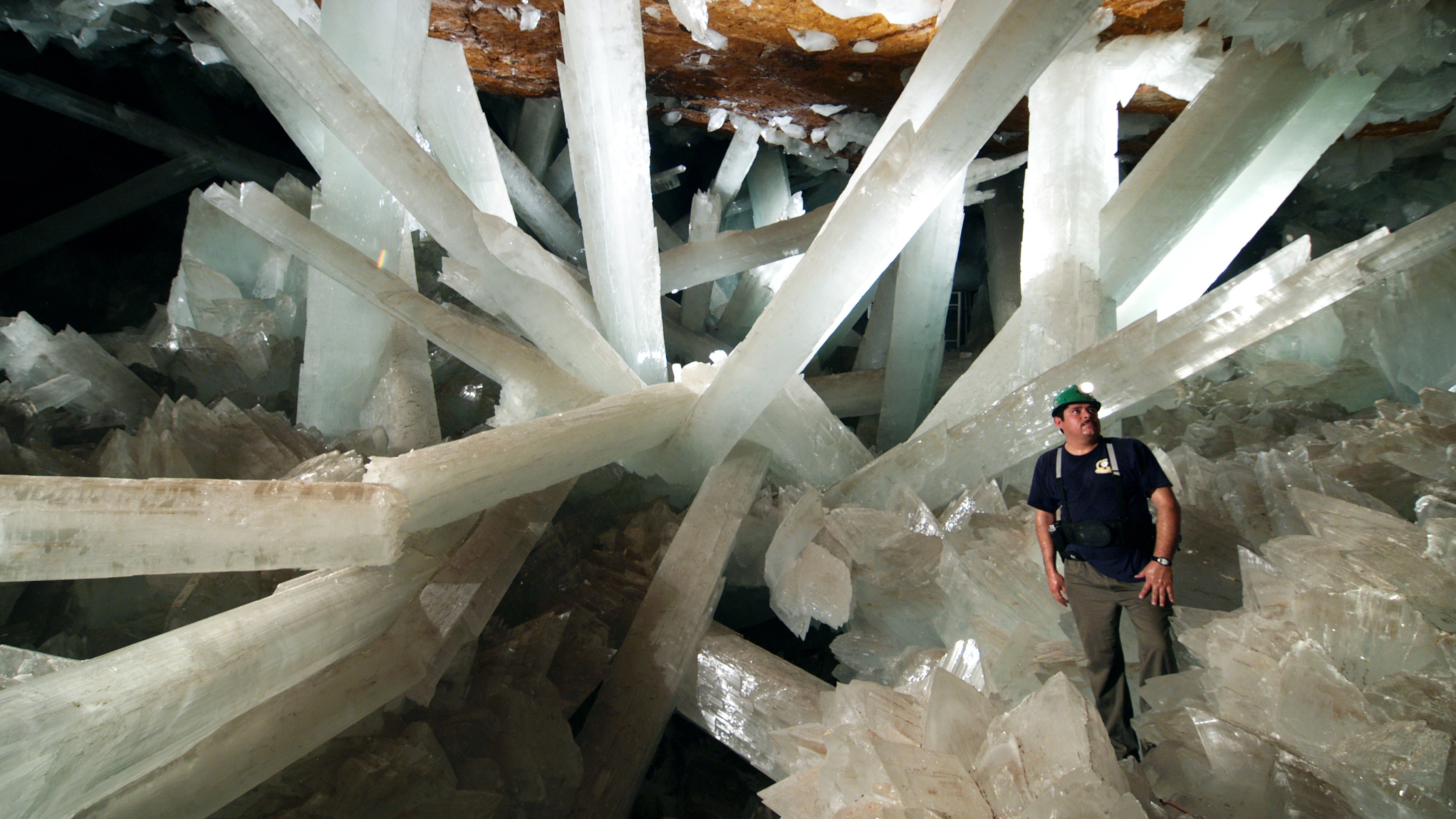Cave of Crystals: The deadly cavern in Mexico dubbed 'the Sistine Chapel of crystals'
The Cave of Crystals in Chihuahua, Mexico, is buried almost 1,000 feet (300 meters) beneath Earth's surface and contains giant gypsum crystal beams that are up to 37 feet (11 m) long.

Name: Cave of Crystals
Location: Chihuahua, Mexico
Coordinates: 27.850823490019174, -105.4963675458159
The Cave of Crystals is an underground cavern filled with tree-size gypsum crystals, including some of the largest natural crystals ever found. The cave is located around 980 feet (300 meters) deep and is connected to a lead, zinc and silver mine in Naica, 65 miles (105 kilometers) southeast of Chihuahua City. The mine was flooded almost 10 years ago after workers accidentally broke into an aquifer, but the Cave of Crystals sits higher in the ground, meaning the water didn't reach it.
Miners discovered the Cave of Crystals by chance in 2000 while drilling a side tunnel to help ventilation in the mine. When they stepped inside, they discovered a chamber packed with enormous, milky-white crystals — the largest measuring over 37 feet (11 meters) long and 3.3 feet (1 m) wide. The crystals are made of selenite gypsum, a sulfate mineral that forms from salts dissolved in groundwater. It is so soft you can scratch it with a fingernail.
Related: Water leaking into Earth's core may have birthed a mysterious layer that churns out crystals
Mining operations in Naica began in 1974, and several crystal-filled caves have since been discovered — including the Cave of Swords, which is studded from floor to ceiling with dagger-like crystals. But the Cave of Crystals is by far the biggest, stretching 360 feet (110 m) across with a maximum volume of 210,000 cubic feet (6,000 cubic meters) — more than twice the size of an Olympic swimming pool. The cave is shaped like a horseshoe and carved out of limestone rock.
"It's the Sistine Chapel of crystals," Juan Manuel García-Ruiz, a geologist with the Spanish National Research Council (CSIC) and at the University of Granada in Spain, who has studied the cave, told National Geographic in 2007.
The cave sits on a fault line and above a magma reservoir buried 2 to 3 miles (3 to 5 km) beneath Naica. Roughly 26 million years ago, magma rose from this chamber, forcing mineral-rich waters upward through cracks in the rock. The scalding water opened caverns in the limestone and formed deposits that crystallized over thousands of years as it slowly cooled. Temperatures later stabilized at around 136 degrees Fahrenheit (58 degrees Celsius), creating ideal conditions for gypsum crystals to grow to mammoth proportions from a mineral called anhydrite.
The conditions in the cave are just right for crystals, but they are deadly to humans. Temperatures stayed the same after the water drained but humidity reached over 90%. At that humidity level, sweating has no cooling effect on the body. As a result, people need proper protection to stay in the cave for longer than 10 minutes. Walking among the crystals is also dangerous, because the beams are slick and with condensation and extremely slippery.
Get the world’s most fascinating discoveries delivered straight to your inbox.
The crystals are growing more slowly now they aren't submerged, and their appearance will likely change over time as they become progressively more dehydrated. But for now, the cave "is OK," García-Ruiz told Live Science in an email.
Discover more incredible places, where we highlight the fantastic history and science behind some of the most dramatic landscapes on Earth.

Sascha is a U.K.-based staff writer at Live Science. She holds a bachelor’s degree in biology from the University of Southampton in England and a master’s degree in science communication from Imperial College London. Her work has appeared in The Guardian and the health website Zoe. Besides writing, she enjoys playing tennis, bread-making and browsing second-hand shops for hidden gems.
 Live Science Plus
Live Science Plus






